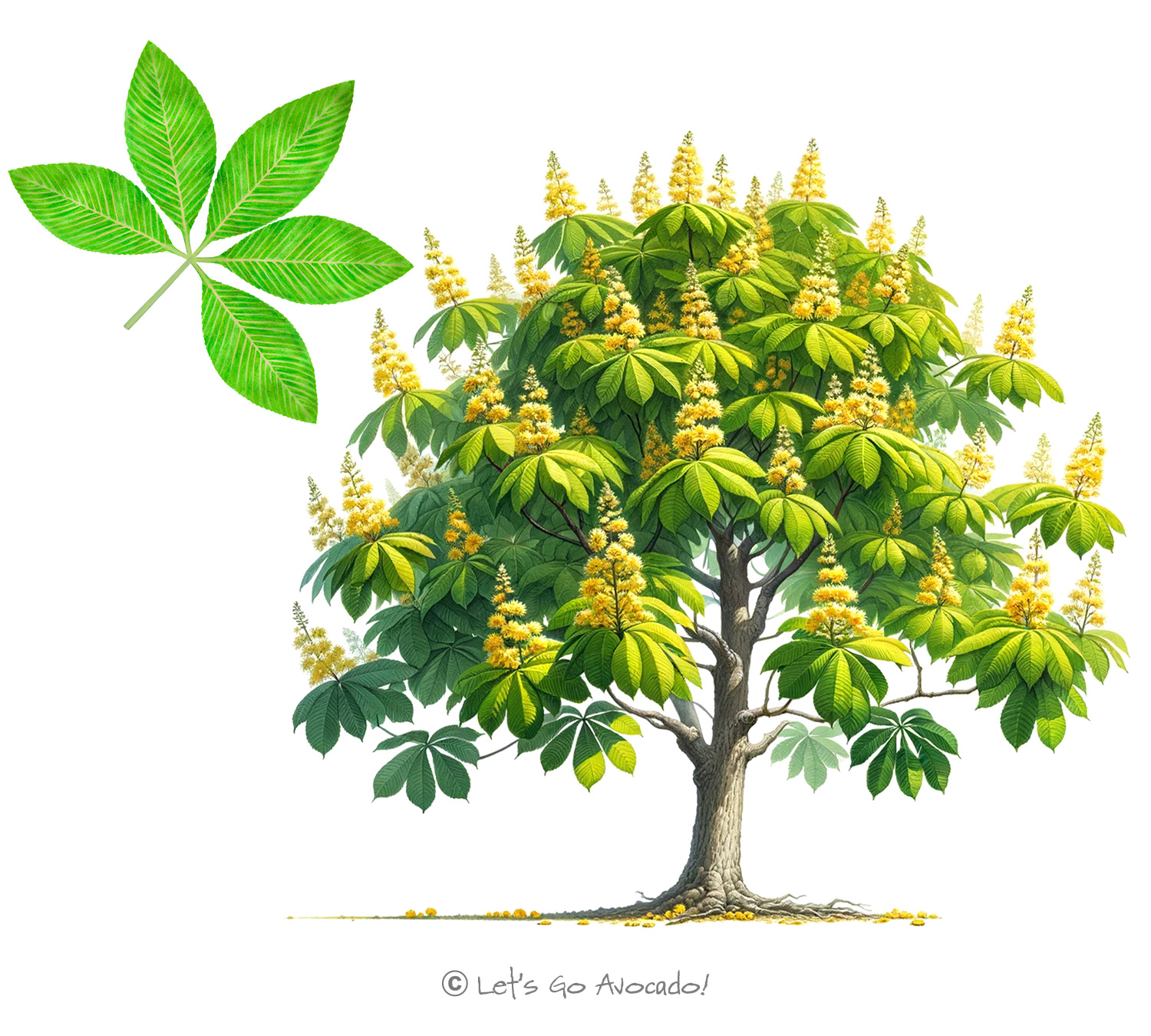The Yellow Buckeye Tree: A Forest Marvel
Get ready to meet one of the coolest trees in the forest – the Yellow Buckeye, also known as Aesculus flava! This tree is a real standout, especially in the eastern forests of the United States. With its big leaves, stunning flowers, and unique seeds, the Yellow Buckeye is not just any tree; it’s a real star of the woods.
Spotting a Yellow Buckeye
The Yellow Buckeye is easy to recognize with its large, palm-shaped leaves that have five leaflets each. In the spring, it shows off with tall clusters of yellow flowers that are a big hit with bees and butterflies. But wait, there’s more! In the fall, it grows cool seeds that look like shiny, brown buckeyes. These seeds are encased in a husk that splits open when they’re ready.
How Big Does This Tree Grow?
The Yellow Buckeye is pretty impressive in size. It can grow up to 70-90 feet tall (21-27 meters). That’s about as tall as a seven-story building! It has a thick trunk and branches that spread out wide, making it a great tree for shade and for animals to hang out in.
The Yellow Buckeye’s Life in the Forest
This tree loves the forest, especially near rivers and streams. It likes to have room to grow and plenty of sunshine. In the fall, animals like squirrels have a feast with its buckeye seeds. Even though people shouldn’t eat these seeds, they’re super important for the wildlife in the forest.
Why Is the Yellow Buckeye Important?
Besides giving animals food and a place to live, the Yellow Buckeye helps the forest in other ways. Its big leaves fall off and make the soil richer, which is great for other plants. Plus, its flowers are important for bees and other pollinators.
Is the Yellow Buckeye a Tough Tree?
Yes, it is! The Yellow Buckeye can handle different kinds of weather and soil. It’s strong and grows well, especially in places that aren’t too dry.
Do People Like This Tree?
People really like the Yellow Buckeye for its beauty. Its flowers and leaves make it a popular tree for parks and big gardens. And guess what? Some people collect those shiny buckeye seeds for good luck charms!
The Yellow Buckeye tree is more than just a big tree with pretty flowers and cool seeds; it’s an important part of the forest. It helps the animals and other plants, and it makes the forest a beautiful place to be.
Remember, every tree has its own special story, just like the Yellow Buckeye with its towering presence and unique seeds. Keep exploring and learning about trees, and you’ll find out how each one has its own amazing role in nature!










